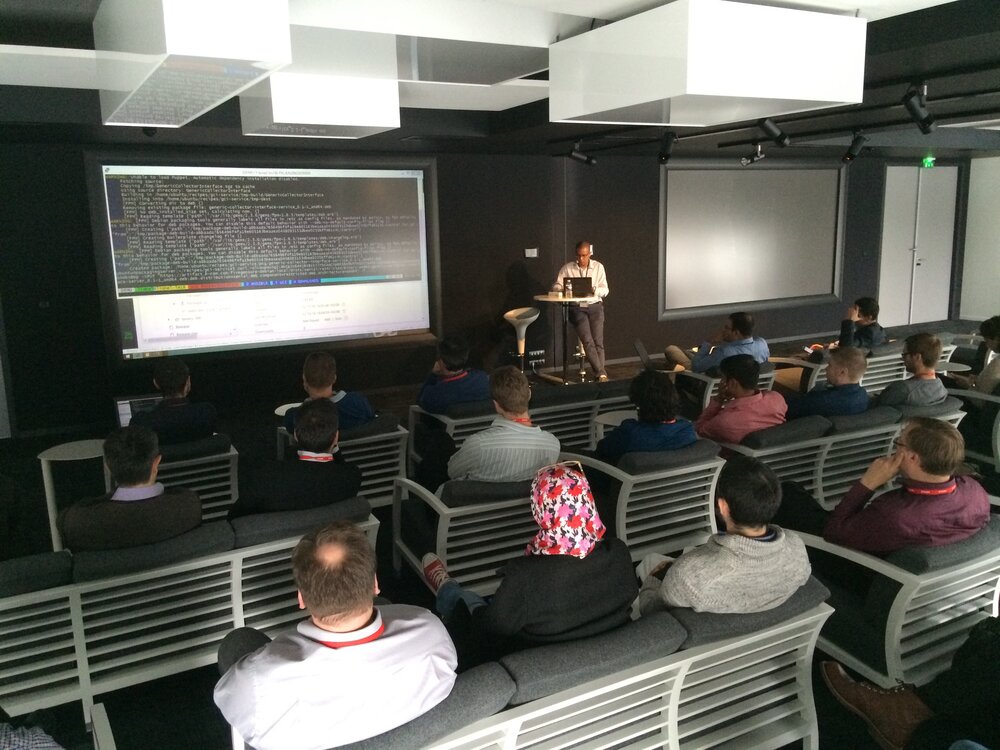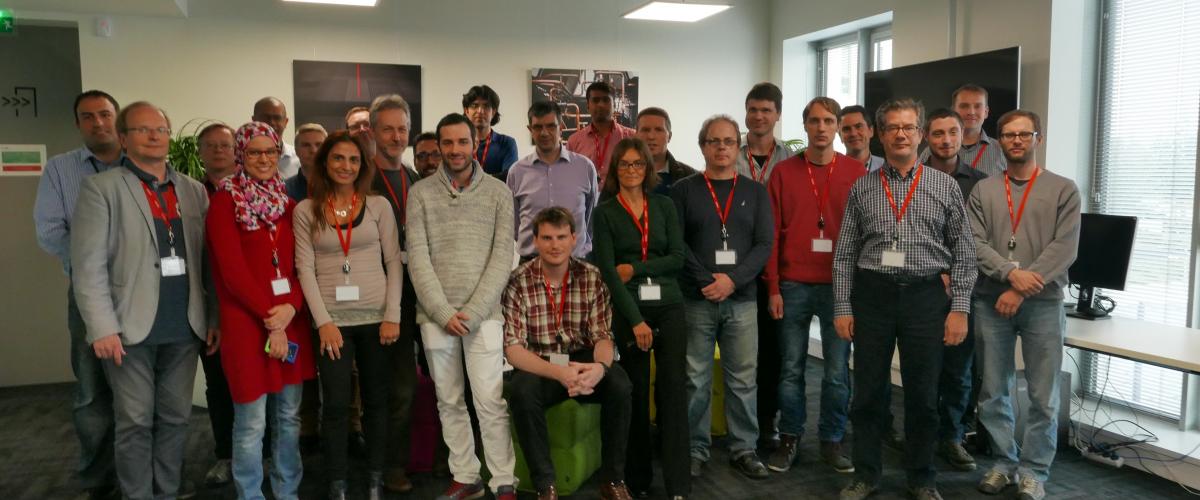European experts meet up at b<>com for a working session on the security of 5G networks and visit the fully operational 5G testbed.
In line with its ambition to provide solutions for the future of European citizens’ everyday life, b<>com participates in the 5G-ENSURE project which aims at developing software enablers for network and system security and resilience, in order to make future 5G networks trustworthy.
This week, b<>com hosted the 4th Plenary Meeting of 5G-ENSURE. Bringing together telecom manufacturer, network operators, IT providers and research institutes, the objective of the project is to deliver a strategic impact across technology, business enablement and standardisation by making real the vision for a resilient, secure but useable 5G network.

During 3 days, the partners shared the results of the 1st year of work: after the initial step which leads to identify the use cases and analyze the threats, a first 5G security architecture has been defined by the project team, in conjunction with partners’ contribution to standardisation bodies like ETSI and 3GPP. A first set of software enablers have even been released and is now ready to be instantiated on the testbed.
Indeed, one of the main objectives of the meeting, organized in b<>com premises in Rennes, was to showcase the 5G testbed which has been successfully deployed by the 5G-ENSURE project team. b<>com has been specifically involved in the building of this key asset. Designed and set-up to satisfy the needs & requirements of the security enablers, the testbed envisions what a 5G network could be at a small scale. It encompasses the following building blocks:
- Firstly, a cloud infrastructure which provides computing, storage and network resources. The partners visit in Rennes the telco-grade data center which has been designed by b<>com and is operated by b<>com staff. Interconnected with Finish partner VTT infrastructure, 5G-ENSURE project provides the first pan-European distributed infrastructure for 5G testbed.

- Secondly, a virtualization of the Network Functions. Security enablers developed in the scope of 5G-ENSURE project and VNFs (Virtual Network Functions) provided by partners will be both hosted on the above mentioned cloud infrastructure. With an orchestrator to deploy and perform service chaining of Security Enablers and VNFs, the testbed is the appropriate environment to play the use cases defined at the early step of the project. During the plenary, b<>com demonstrates two key VNFs which remains part of its background: its Unifier Gateway, which provides a scalable distributable Converged Access Control and Core for Wi-Fi and LTE networks (with a SIM based authentication for a secure and easy access to both networks), and its software radio enabler for 5G, based on OpenAirInterface, an open source hardware/software solution for wireless networks.

- Thirdly, a Radio Access Network which has been granted to b<>com by French Regulator (Arcep) for testing in Band 38 (2,6 GHz TDD, 30 MHz). b<>com also showcased to the partners the hardware cabinet that supports its LTE and IoT gateways to perform indoor and outdoor test sessions.

- Finally, the whole workflow and the toolbox that has been setup to operate the testbed and the test sessions has been presented to the whole assembly. This toolbox encompasses access control, a helpdesk (to interact between enablers’ owners and testbed operator), an automation engine for enablers’ deployment, a repository manager for the enablers’ catalogue, and a test case manager. This process is deeply in line with 5G perspective in terms of agility and DevOps approach. b<>com performed a hands-on session in order to train the enablers owner to this Continuous Delivery process
The 5G-ENSURE plenary meeting ends with the anticipation of the next steps for the testbed, i.e. the integration of the 1st release of enablers before detailing test session in order to evaluate enablers’ efficiency (against penetration test for example) and move forward a 2nd release for next year.



